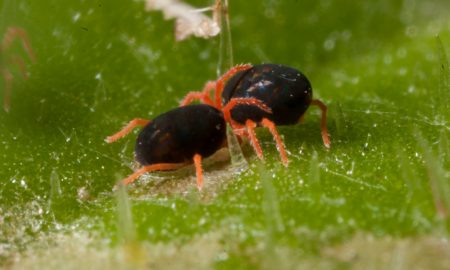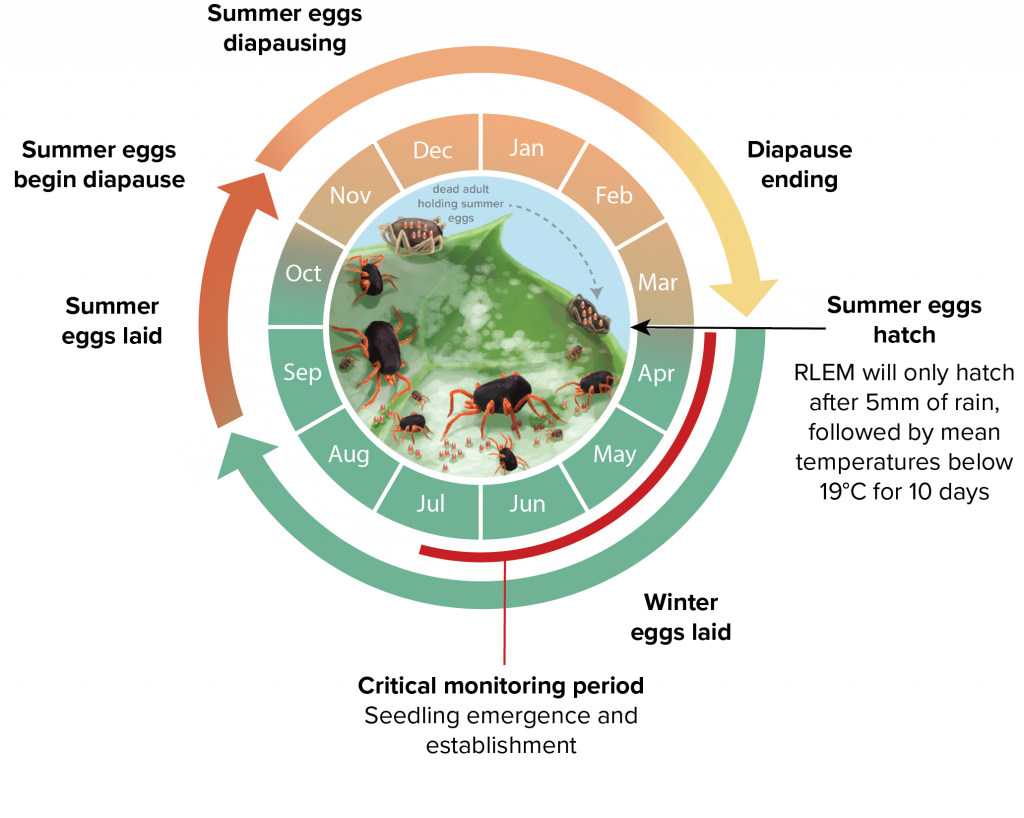Redlegged earth mite hatch timing tool
Decision aid tool Monitoring tool
Photo by Andrew Weeks, Cesar Australia
The redlegged earth mite hatch timing tool has been developed to estimate the timing of egg hatch in different locations depending on local climate conditions.
The importance of timing
Redlegged earth mites can have up to 4 generations per season. In autumn, over-summering eggs hatch when there is significant rainfall and the mean daily temperatures fall below approximately 19°C. The first few generations lay eggs that mostly hatch during winter. It takes approximately 4-6 weeks for nymphs to develop into mature adults. In spring, adult mites produce over-summering diapause eggs that are retained in their bodies.
The hatch timing tool helps to aid decision making by predicting when eggs will hatch in autumn, which is a great indicator of when to increase crop monitoring.

On the ground validation
To improve the usefulness of our hatch timing tool, we need to validate the estimates provided by the model. Reports from growers and advisors are an extremely valuable part of this validation. If you have used the tool and checked to see whether mites were present, please consider providing your report via this form. It only takes a minute!
This tool is still in development. If you have any feedback about future features, we would love to hear from you. Please let us know, by sending an email to: pestfacts@cesaraustralia.com
This web tool was developed by Dr James Maino through a GRDC investment (CES2010-001RXT) with contributions from CSIRO, Cesar Australia, the University of Melbourne, and the Department of Primary Industries and Regional Development.
- Published
- Categories
- Integrated pest management
